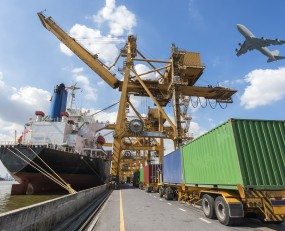
The freight forwarding sector has undergone a remarkable development over the past decade. As Ti’s CEO John Manners-Bell explains in the 2016 edition of Global Freight Forwarding, “Riding the boom times of China’s ‘economic miracle’, freight forwarders benefited from increasing globalization and the soaring volumes that went with it.” However, since the global downturn of 2008-9 the industry has experienced bumpier times. Trade volumes have weakened and air and sea freight rates have fallen due to systemic over-capacity. The economic outlook is also unclear as China’s woes impact on the whole of world trade.
With low demand in the market, several freight forwarders look to be focussing their efforts on improving profitability rather than growth. This has been manifested through rationalisation, investments in software, and an emphasis on high value contract opportunities. More than ever, forwarders need to be agile and adaptive to their customers’ needs.
New, exciting technologies are being developed which have the potential to transform forwarding and trade processes. They could also allow small and medium size forwarders to compete more effectively against the big corporates as technology becomes increasingly cheap and democratized. A collaborative supply network, driven by software and with a scope beyond individual supply chains, could transform the industry. For SMEs to prosper they must exploit the opportunities that the democratization of technology has brought in order to grow and lock in customers.
The next few years could see root and branch changes in the composition of the industry as new market entrants, such as Amazon, eye up opportunities and efficiency savings. Global Freight Forwarding 2016 provides industry stakeholders with the necessary market intelligence to plot their strategies to take advantage of the opportunities and avoid the pitfalls in a constantly changing market environment.
Mergers and acquisitions in the industry have disrupted the make-up of the global air and sea freight market, in recent years. According to Ti’s rankings of the top 20 sea freight forwarders, by both revenue and TEUs, the usual suspects compete for the top positions, however the real headline act from the rankings in 2016 was DSV. In terms of sea freight revenues, when including the estimated full-year impact of its acquisition of UTi as well as the Danish company’s organic growth, DSV moves up the ranking from its former 7th position.
The same is true for the air freight ranking by revenue, DSV has raced up the ranking into the top 10. However, the integration of UTi may well have a negative impact on growth, as the Danish company warned in its 2015 annual report.
Combined, the 20 leading forwarders are thought to represent over half of the market, but small forwarders continue to effectively compete against the largest in the industry, demonstrating that economies of scale are not the be-all and end-all of the business.
Ti Economist, David Buckby, stated, “Looking ahead, it would be surprising if there were no further significant deals in the coming years to alter the landscape of the market even more. Further consolidation seems inevitable.”
As with previous years, Ti’s Global Freight Forwarding report, which is available to purchase now, provides industry leading market sizing and analysis of global, regional and country level freight forwarding markets as well as extensive profiles of the top 15 freight forwarders. These profiles include analysis of the company’s background, finances and technological capabilities, as well as a strategic profile and SWOT analysis. In addition, for the first time, the comprehensive report also contains chapters assessing technology in freight forwarding and the market’s overarching financial and volume trends.
For more information about the Global Freight Forwarding 2016 report please click here.
Source: Trnasport Intelligence, August 04, 2016
Author: Lilith Nagorski